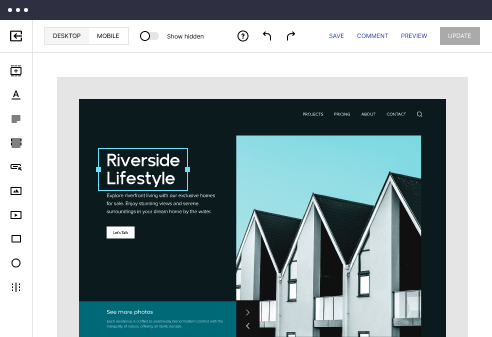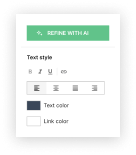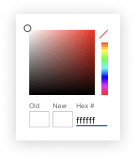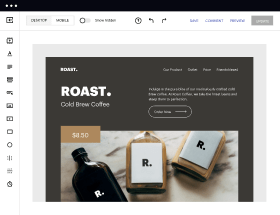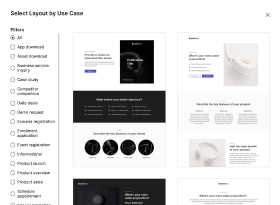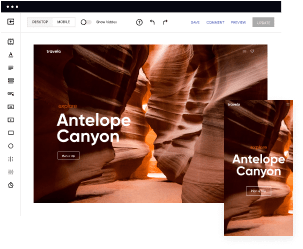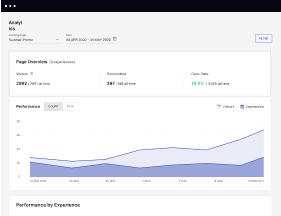Get a starting point with the React.js optimized front page template
Supercharge your front page with React.js for outstanding performance! Learn more today.

Easy to build without coding
With the intuitive drag-and-drop builder, anyone on your team can create high-converting pages without any knowledge of code or design. Make enhancements to your landing page with custom widgets using Javascript, HTML/CSS, or third-party scripts.
Multiple layouts for any industry and goal
Select from 500+ landing page layouts built to boost conversions across industry-specific scenarios. Customize them by adjusting fonts, adding images, and generating on-brand content with the AI assistant. Quickly scale with Instablocks® and Global Blocks that you can save, reuse, and update globally.
Loads fast and looks polished on any device
Every template is responsive, which means they present professionally on any device and load blazingly fast with our Thor Render Engine. You can also power them up with Google AMP technology to deliver an unparalleled mobile experience and drive higher conversions.
Robust analytics & experimentation
Get real-time updates and reporting across all your devices, showing the number of visitors, conversions, cost-per-visitor, and cost-per-lead. Launch AI-powered experiments, run A/B tests, and use heatmaps to analyze user behavior, then optimize your landing page to maximize conversions.
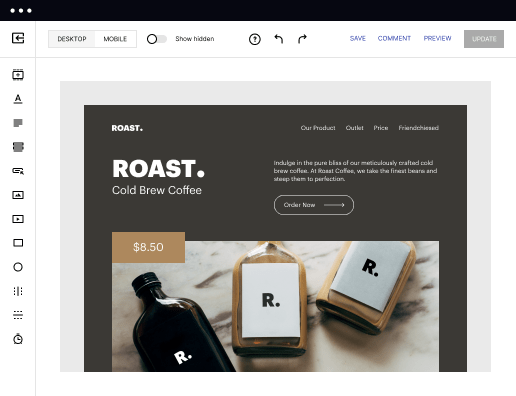
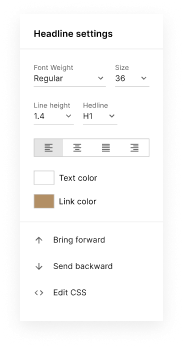
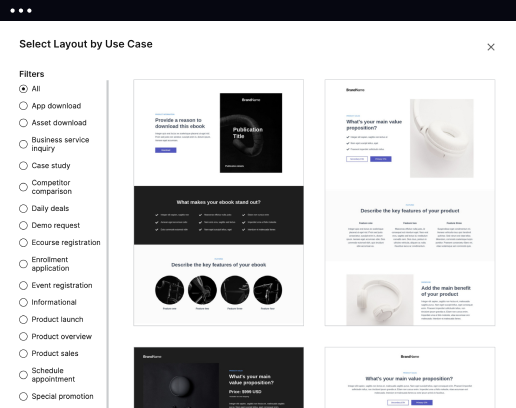
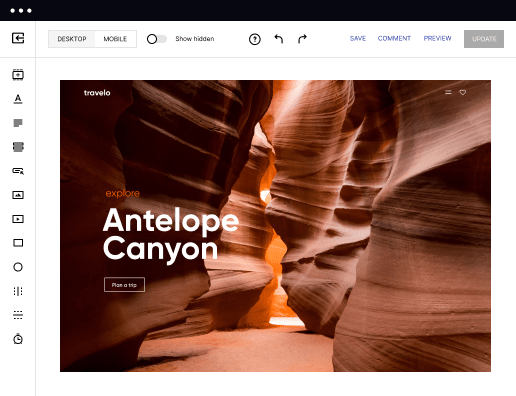
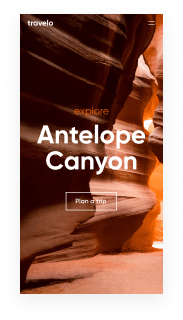
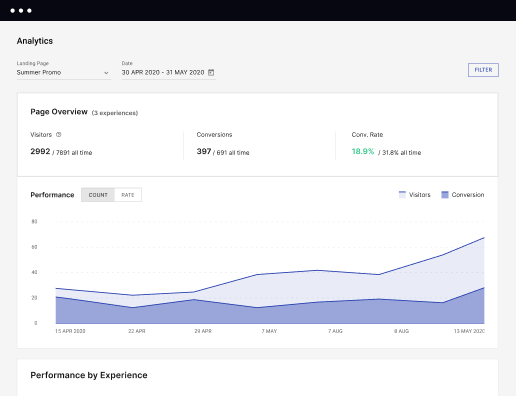
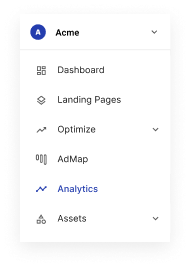
Easy to build without coding
With the intuitive drag-and-drop builder, anyone on your team can create high-converting pages without any knowledge of code or design. Make enhancements to your landing page with custom widgets using Javascript, HTML/CSS, or third-party scripts.
Multiple layouts for any industry and goal
Select from 500+ landing page layouts built to boost conversions across industry-specific scenarios. Customize them by adjusting fonts, adding images, and generating on-brand content with the AI assistant. Quickly scale with Instablocks® and Global Blocks that you can save, reuse, and update globally.
Loads fast and looks polished on any device
Every template is responsive, which means they present professionally on any device and load blazingly fast with our Thor Render Engine. You can also power them up with Google AMP technology to deliver an unparalleled mobile experience and drive higher conversions.
Robust analytics & experimentation
Get real-time updates and reporting across all your devices, showing the number of visitors, conversions, cost-per-visitor, and cost-per-lead. Launch AI-powered experiments, run A/B tests, and use heatmaps to analyze user behavior, then optimize your landing page to maximize conversions.
All the features you need to build lead-generating landing pages
Explore more featuresLearn how to build top-performing landing pages for any goal
FAQs
Leading the way in building high-performing landing pages





A step-by-step guide to optimizing your landing pages with Instapage
Effective digital marketing hinges on the ability to create high-converting landing pages. With Instapage, optimizing your landing pages becomes seamless. This guide focuses on how Instapage empowers marketers in various sectors, such as Business Services and Financial Services, to accelerate their campaigns and achieve maximum ROI, ultimately leading to greater success in the digital landscape.
Understanding the importance of landing pages
Landing pages serve as the critical touchpoint between marketing efforts and conversion. They are designed to convert visitors into leads and customers. To leverage Instapage, it is essential to understand the dynamics of landing pages — from template selections to optimization techniques. High-converting pages are tailored towards specific audience needs, which is where tools like Instapage shine.
- Customization: Tailor every aspect of your landing page to align with your brand identity.
- User Experience: Instapage focuses on user-friendly designs, ensuring visitors can navigate easily.
- Data-Driven Optimization: Utilize analytics and A/B testing to refine page performance based on user behavior.
Building high-converting landing pages with Instapage
Creating landing pages on Instapage is straightforward when you utilize its extensive template library. These templates are designed with conversion in mind, allowing for fast deployment without needing to code.
- Select a template: Start by choosing from over 100+ high-converting templates.
- Customize with Instablocks: Use pre-built sections, known as Instablocks, to enhance your page's structure.
- Add lead generation elements: Integrate forms and CTAs effectively to capture visitor information.
Optimizing for better conversion rates
Optimization is key in improving landing page performance. Instapage provides built-in tools for experimentation, allowing marketers to refine their pages continually.
- Heatmaps: Utilize heatmaps to understand where users click or scroll on your landing page.
- A/B Testing: Conduct A/B tests to compare variations of your page and find the most effective elements.
- Analytics Dashboard: Access comprehensive performance metrics to track conversions and user engagement.
By applying these techniques, you ensure that your landing pages are not only attractive but also effective at converting leads.
In conclusion, Instapage offers marketers a powerful toolkit to enhance their landing page strategies for better ROI.
Ready to transform your landing pages? Sign up for Instapage today and start building campaigns that convert.
Unleashing the power of ReactJS: An optimized front page template
The essence of ReactJS
ReactJS is an open-source JavaScript library developed by Facebook for building user interfaces, particularly for single-page applications. It allows developers to create large web applications that can change data without reloading the page. One of the key features that make ReactJS stand out is its component-based architecture, enabling programmers to build encapsulated components that manage their state. This modularity leads to a clean separation of concerns, making code easier to maintain and scale.
In modern web development, ReactJS plays a crucial role in enhancing user experiences through interactive and responsive designs. Its use of a Virtual DOM optimizes performance by minimizing direct manipulations of the actual DOM, which can be resource-intensive. Essentially, ReactJS enables rapid development cycles, allowing teams to iterate quickly while maintaining high-quality code.
Navigating through the optimized front page template
Understanding the structure of an optimized front page template is vital for maximizing its potential. Typically, a well-structured ReactJS template will include several key areas: a header, sidebar, main content area, and footer. Each of these sections serves to organize content and enhance the user journey on the page.
Header: Contains navigation links and branding.
Sidebar: Offers links to related content and resources.
Main content area: Displays the core information or features.
Footer: Includes contact information, additional links, and CTAs.
Routing plays a crucial role within React applications, especially with the use of libraries like React Router. Having a dedicated 'routes.jsx' file is essential for managing navigation throughout the application seamlessly. By setting up dynamic routes, developers can create single-page applications that feel intuitive and responsive.
Moreover, developing reusable components, such as buttons, cards, and forms, is a fundamental practice for efficient React development. Leveraging hooks for state management enhances interactivity, allowing components to respond to user inputs in real-time.
Crafting captivating content
Crafting effective content for landing pages requires a thoughtful approach. Marketers need to understand their target audiences deeply. This insight informs the design and messaging of the page, ensuring that the content resonates with users. Good copy improves engagement, guides users through the content, and drives conversions.
Dynamic content rendering is another essential aspect of building optimized front page templates. React makes it easy to utilize props to pass data down into components, enabling flexibility. Additionally, managing updates to content through state and effects allows developers to create engaging and interactive user experiences that respond seamlessly to user actions.
Enhancing user experience with design elements
The header is often the first point of interaction for users. Therefore, it should be optimized with intuitive navigation menus that guide users effectively through the site. Including a search functionality further enhances accessibility, allowing users to find content quickly.
The sidebar holds equal importance by organizing links and relevant content efficiently. By incorporating social media links and share buttons, it not only enhances user engagement but also expands the reach of your content.
Lastly, the footer acts as a conversion magnet. Structuring it to include essential information, such as contact details and links to other resources, aids user navigation. Including features like subscription forms or feedback options can also drive engagement and boost conversion rates.
Performance optimization strategies
Minimizing load times is a priority for any developer aiming to optimize a front page template. Following best practices for asset management, such as compressing images and utilizing base64 encoding for small graphics, can significantly improve download speed. Code-splitting and lazy loading components are also effective strategies to ensure that users only load content when it's necessary, reducing initial load times.
Selecting the right state management strategy is crucial for efficient rendering. Depending on the project, developers might choose between local and global state management. Utilizing the Context API or Redux can help streamline the state management process, ensuring that component updates happen smoothly and efficiently.
Testing and debugging the ReactJS template
Testing is an integral part of the development workflow, especially when building a user interface with ReactJS. Different types of testing—unit, integration, and end-to-end—help ensure the application behaves as expected. With React's component-based architecture, unit tests are particularly effective at verifying the functionality of individual components.
Jest: A popular testing framework for React applications.
React Testing Library: Provides tools to test React components effectively.
Ensuring cross-browser compatibility can be challenging but is essential for user satisfaction. Tools like Lighthouse can assist developers in monitoring performance, making necessary adjustments to improve speed and stability across different web browsers.
Community contributions and open source frameworks
The significance of developer communities cannot be understated. Collaborative platforms like GitHub allow developers to share their code, seek assistance, and contribute to open source projects. This kind of collaboration enhances learning and innovation, enabling developers to build better applications more efficiently.
Utilizing open source libraries can significantly enhance an optimized ReactJS template's functionality. For instance, libraries like Styled Components offer advanced styling options, while Axios simplifies API integration, allowing developers to communicate with back-end services more effectively.
Future-proofing your front page template
Adapting to emerging technologies is vital for developers aiming to keep their applications relevant. Trends such as concurrent features in React and the growing adoption of TypeScript with React enhance both user experience and maintainability. Developers should remain informed of these trends to leverage new capabilities effectively.
Building scalable components is another key consideration when developing templates. A well-structured template not only facilitates current projects but also positions developers for future growth. Incorporating user feedback and analytics can further refine designs to ensure they meet the evolving needs of users.
Real-world applications and success stories
Showcasing how businesses leverage ReactJS templates reveals the library's versatility and power. For example, numerous case studies highlight successful landing pages built with React that significantly improved conversion rates. These examples provide tangible evidence of the effectiveness of optimized templates in driving business goals.
Exploring various project routes illustrates the flexibility of React in addressing distinct business needs. Whether it’s an e-commerce site needing quick product updates or an educational platform offering customizable content, tailored templates cater to various industries and objectives, demonstrating the adaptability of ReactJS frameworks.
Ready to skyrocket conversions?
Supercharge your ad campaigns with high-performing landing pages
Get started